|
|
|
Clutter blindness is a condition that is all too common. Simply stated, it is the inability to see clutter and/or recognize it for what it is. When you're clutter blind, your life is often negatively impacted in some way as a result of clutter. Here is an example. A year or so ago I was helping a lady who was preparing to move to a much smaller home. She had recently lost her husband to a lengthy battle with cancer, she was basically being forced from her current home, and she was understandably feeling overwhelmed and adrift. During the two years that she served as her husband's caregiver, more and more of their home was gradually overrun with medical supplies, to include a large hospital bed which took up a significant portion of their dining room. As the medical supplies moved in, other things were forced to give up their space. There were piles of stuff literally everywhere. For many, many months she had simply been moving stuff aside and shifting things around because she lacked the physical and mental energy to deal with organizing and decluttering. I spent a morning helping her move empty boxes from the middle of her living room to the back bedroom (which was mostly empty). As we moved the boxes to their new location, we sorted and stacked them according to size so that she could easily identify what she had and find the perfect size box for her needs. We did little more than move boxes and consolidate a few storage containers on that particular occasion, but when we were finished, she exclaimed, "Wow! This place is clutter-free now!" Her statement surprised me. The room was obviously not clutter free. Every surface of the room was cluttered. Only the floor had been partially cleared. It was impossible to sit anywhere on the rather expansive sectional sofa without moving something out of the way. The same was true of every other piece of furniture in the room. What I came to realize later was that she quite literally could not see the clutter. To her it had become a part of the landscape of the room. It belonged there, in a sense. She was so used to it, that it no longer registered as clutter to her brain. This is what it means to be clutter blind. Because of the gradual way in which this "condition" develops, it can be difficult to "diagnose" it, particularly in oneself. Following are a list of "symptoms". Symptoms of Clutter Blindness
Curing Clutter BlindnessLike any chronic condition, clutter blindness takes time and effort to cure. There is no miracle pill or magic solution, but a shift in mindset accompanied by a series of intentional steps can cure a person of this habitual plight. As is the case in overcoming any persistent medical issue, consistency in following the prescribed treatment is essential to ensuring long term success. The solution outlined here will be most effective if followed in the recommended order.
If you are suffering from clutter blindness, you need help. You need someone who can see clearly what you are unable to see. You need someone who will offer support, encouragement, and accountability. You can turn to a family member or friend for assistance, but I strongly recommend seeking the services of a professional organizer in this case. Here's why:
If you live in the greater Kansas City area (Kansas or Missouri), contact me. I would love to help you! If you live elsewhere in the United States, you can start by doing a simple internet search, but I recommend going through the National Association of Productivity & Organizing Professionals (NAPO). To be featured on their site, professionals have to become certified, so you know they meet a certain standard and have a guaranteed degree of knowledge and experience. This is not true for sites like Home Advisor, Find My Organizer, and others. Just click on the Find a Pro tab to obtain a list of organizers near you. Another great resource for locating professionals is The Institute for Challenging Disorganization.
It's one thing to recognize you have a problem. It's even better to acknowledge that you need help, but until you are mentally committed to making changes in your home and your habits, you are wasting your time. That may sound a bit harsh, but it's true. Real, lasting success is dependent upon unwavering, lasting commitment. Overcoming clutter blindness isn't something you can wish away or fix with minimal effort. The effort involved here is akin to losing a significant amount of weight or getting in shape for a significant athletic competition. The half-hearted approach will not succeed. If you are truly committed, there are a few things you can do to ensure your success. MAKE A PLAN: They say that a goal is just a wish unless you write it down. I would add that a goal cannot become a reality without a plan. The goal is what you ultimately hope to achieve. The plan is your path to get there. Your plan should include the process you intend to implement. Consider the following:
UNDERSTAND THE PROCESS: Almost everyone recognizes a need to get organized, but most people don't really understand what that entails. Organization is a process. It starts with a vision for the space, whether it's a desk drawer, a closet, a room, or an entire home. To have success you must first define success. Otherwise, how will you know when you have achieved it? The next step in the process is to dismantle. In the case of an entire house, this means working in small sections. If you are clutter blind, it will most likely mean tackling one pile or clearing one surface at a time. As you break down the stacks of stuff, you should be focused on decluttering and downsizing. Identify the things you no longer need and set them aside for disposal. The things you intend to keep will then be sorted and organized. The final step is to maintain your newly organized space. This will require the development of systems or habits that will help you keep things functioning smoothly and prevent the accumulation of clutter. This is a lot to remember, so here are some resources to help you wrap your head around the process.
This quote from the Chinese philosopher Confucius is applicable when it comes to overcoming clutter blindness. When dealing with clutter people often feel overwhelmed and don't know where to start. The truth is, it doesn't matter where you start, only that you do. Pick a pile and go to work. When you finish with the first pile, move onto another, and just keep moving forward. Don't berate yourself if your pace is slow. Just keep plugging along. So long as you're progressing, you're succeeding.
Decluttering can be physically, mentally, and emotionally draining. It's tempting to cut corners or to set things aside to be dealt with at some future date. Resist the temptation. If you need to take a break and come back to something, that's great, but come back to it. Pick up where you left off after each session and don't abandon a particular aspect of the project until it's complete.
A system is just a method of doing things. When it comes to staying organized, it's useful to design systems that help you to maintain an organized space. I've outlined a simple procedure for designing systems. I call it the Three P's. You can read more about it here.
Labels are a great way to maintain organization once it's been established. Labels make it clear to everyone what goes where. They make it easy to find what you're looking for and easy to put things away. They also serve as a reminder that stuff has a designated space which can be important if you're used to piling things up instead of putting them away.
The concept of "resetting the room" comes from an IT developer named Oswald Nuckols, but I learned about it in James Clear's book Atomic Habits (affiliate link). It's something I've always done, but I had never put a name to it. The basic notion is to place things back where they belong before leaving a room so that when you return it's ready to be used for its intended purpose. One example provided by Mr. Nuckols is putting away the television remote, rearranging the sofa pillows, and folding the blanket after watching TV. These simple actions take seconds, but they make a big difference. The condition in which you leave a room impacts your mindset whether you realize it or not. For instance, some people will argue that it makes no sense to make the bed if you are just going to get back in it at the end of the day. What they don't recognize is that an unmade bed sends a visual signal that communicates a powerful message: it's OK to be messy. Whereas, a made bed makes you feel accomplished the moment your day has begun and conveys a sense of responsibility for and control over your space that extends beyond the bed to the room and even the entire house. If you can develop the habit of resetting the room after each use, maintaining order will become natural and habitual. Final ThoughtsYou won't find clutter blindness listed in The Diagnostic and Statistical Manual of Mental Disorders (DSM), but that does not make it less real. As an organizer I have encountered it on many occasions. It's something to take seriously. If you have any or all of the symptoms I've identified here, please know that there is a solution (or cure). You do not have to be a slave of your stuff. You can gain the upper hand and feel comfortable and at peace in your space. I hope you've found this information useful. If you know someone else who might benefit from the ideas expressed here, please share this post with them. I hope you will also feel comfortable sharing your thoughts on this rather personal and sometimes painful situation with me and my readers. I invite you to do so in the comments section below.
6 Comments
I absolutely love this quote (shown above) by Thomas Jefferson. For me it is a foundational axiom of household organization. If applied mindfully and intentionally, a person can use this maxim to create the kind of space that speaks to the soul, a space where one can not only feel at home, but also at peace. The problem is, most of us do not approach the establishment, organization, and maintenance of our homes with this adage in mind. Instead of carefully curating a space that represents who we are and what matters most to us, we let the uninspiring, trivial, and outdated inundate our space and overshadow the things that truly bring us joy. I know I have been guilty of this at times. Chances are, you have been as well. If your home, or portions thereof, have succumbed to the subtle, yet assertive influence of clutter, it may be sending a subliminal message, both to you and to others who enter, that is inconsistent with who you are or who you are striving to become. To begin with, let's talk about what your clutter might be saying about you, your life, and your experiences. What Message Are You Sending?An excessive accumulation of clutter can send a variety of messages to observers. The type of message depends, in part, on the type of clutter. Here are a few of the most common subliminal interpretations that arise when people enter a cluttered space.
How to Curate a Space That Reflects Who You AreAs I consider the notion of curating spaces that befittingly represent "the museum of our soul and the archive of our experiences" a quote from Dr. Seuss's book Oh, The Places You'll Go! comes to mind:
In other words, it doesn't matter where you are now with regard to the state of your space. As the architect and administrator of that space, you are in control. You have the power to make meaningful changes that faithfully reflect your personality, passions, and preferences. Here are a few things you can do to begin the process of curating a space that speaks of and to you:
Show Your StuffA home is like a blank canvas. It will take on a different look for each new occupant. I observed this phenomenon as a military spouse living in on post housing. The houses were typically similar, if not identical, in structure and layout, but the look of each home was unique to its occupants. Whether you own or rent your home, you have the power to create a space that is reflective of you and your family, and if your space is saying things about you that you do not approve of, you have the power to make positive changes in your environment. There is clutter, and then there is clutter. Some clutter is deep rooted, emotionally charged, and physically intimidating. Taming it demands an investment of time and energy. Surface clutter, the clutter that piles up on a day to day basis, mostly the result of procrastination, can be significantly reduced by implementing a few simple clutter-busting behaviors. There are two simple steps involved in eliminating surface clutter.
Start by training yourself to notice things that are out of place. One way to do this is to routinely scan a room to identify items that have strayed from their proper home. As you practice scanning, make a mental note of the kinds of clutter that tend to pile up. This will give you a sense of where systems are needed. In particular, be on the lookout for common contributors of clutter – dishes, mail, clothing, etc. The next step is to begin turning clutter-building habits into clutter-busting behaviors. It’s easier than you might think. To help you get started, I’ve identified five common problem areas and suggestions for building clutter-busting behaviors. These simple habits can significantly reduce the daily buildup of clutter. Consistently do these five things, and I guarantee you’ll notice a difference in the amount of surface clutter in your home.
The bed is the focal point of the bedroom, and as such, it has the power to dictate the mood of the space. A rumpled, unmade bed is an invitation to be messy. Clothing, shoes, and other articles strewn lazily about look perfectly at home with an unmade bed. On the other hand, a neatly made bed communicates order and inspires tidiness. To toss things about sloppily in such a space creates a sense of discord and unease. In essence, the space feels at odds with itself.
A made bed communicates something to its owner as well. It says, “I care. I’m invested in my space and myself.” Simply making the bed starts each day off on the right foot. Before leaving the bedroom, you have accomplished something productive and set a positive tone for the day.
It’s tempting to toss dirty dishes in the sink and walk away, but like an unmade bed, a sink full of dirty dishes sends a message that order is not a priority. It also serves as a nagging irritant. Those dirty dishes are a constant reminder of a thing that requires your attention. The fact that you’re not dealing with it can lead to feelings of guilt. The more dishes that pile up, the less appealing the task becomes, and the more you’ll feel like procrastinating. The longer you procrastinate, the more dishes pile up and the more time consuming the task becomes.
Before you know it, a few dirty dishes can lead to a whole lot of [unnecessary] stress. But it doesn’t have to be that way. Try these tips for controlling dirty dishes – so they won’t control you.
Clothing, whether dirty or clean, can be a major culprit in contributing to clutter. The funny thing is, it only takes a few seconds to hang up or put away a single article of clothing, barely more time than it takes to dump it on the floor, the bed, the furniture, etc. If, however, it’s left to pile up over the course of days, the time required to put things where they belong increases significantly. The key is to set yourself and your family up for success.
This can be achieved by simplifying the process as much as possible. Here are some examples:
For many people, there is something truly intimidating about mail. Mail requires decision making, and we often encounter it at a point in the day when we’re tired of making decisions. So, we leave it to deal with later, and before long, it has become an overwhelming pile. On the other hand, if you’re only dealing with a single day’s mail, it only takes a few minutes (sometimes less) to complete the task.
The secret to preventing pile up is to develop (and utilize) a system for dealing with the mail. Designate a spot for opening the mail each day. Make sure there is a pair of scissors or letter opener nearby. It’s also useful to have a bin handy for recycling junk mail. As soon as the mail enters your house, sort it according to type: things to be recycled (put them directly into the bin), things to be shredded, things that require immediate attention (to do now), and things that require action but can wait (to do later). Have a place for each type of item, and immediately put items in their proper place. If you have time to deal with an item that requires action, do it.
This may seem like a no-brainer, but a lot of clutter collects from people walking in the door and dumping whatever they're carrying. The best way to prevent this is to have a place for things like purses, keys, coats, and shoes, and put them in their place as soon as you enter.
If you’ve made purchases, put them away. If you’re carrying the mail, deal with it. Most things can be put away in a matter of minutes (or less). Not putting things away leaves the home feeling cluttered and invites buildup over time which requires significantly more effort to be dealt with.
Try implementing these five suggestions for conquering surface clutter. I think you'll find that it helps a great deal with controlling the overall clutter in your home.
Clutter is a byproduct of choice. With every advance in technology our choices increase, and with those increasing choices comes an increase in clutter. There are several reasons why this is true. In some cases, advancing technology produces products we’ve never seen before but are sure we need to improve the quality of our lives. Sometimes, a newer, nicer version causes us to feel dissatisfied with our existing product, so we go out and buy a replacement. Instead of actually replacing the outdated item, though, we hold onto it because “it’s still good” or “it might be worth something”. Thus, clutter is born. People think the answer to their clutter problem is more space, but in reality, the answer is almost always less stuff. A surefire way to control clutter is to limit your choices. As a bonus, controlling clutter by limiting choices can actually lead to increased happiness. Studies show that the fewer choices we have, the more satisfied and content we feel. Lauren Migliore explains it this way in her article “I Can’t Decide! Why An Increase in Choices Decreases Our Happiness”:
If too many choices lead to unhappiness and too much stuff leads to clutter, then a simple approach to this problem is to place limits on how much stuff we keep. The key is to make mindful decisions based on naturally (or in some cases self) imposed constraints. Such constraints can be spatial in nature, or they can be numeric.
Spatial constraints result when you let the available space determine what you keep. For instance, if you’re a book lover, but you only have space for one bookcase in your apartment, then the number of books you keep should be limited to the capacity of your bookcase. Books that don’t fit on the bookcase become clutter, and as such, they lose their identity, becoming part of the landscape. If you are a crafter and you have a large closet available for storing craft supplies, then you must limit your craft supplies to what can be contained within that closet. Find ways to maximize the space and then minimize your supplies, keeping only those things you know you’ll actually use.
Young children are natural hoarders. They are unable to assign realistic value to things. In their eyes, the cheap plastic toy that came with their lunch is as valuable as the $50 building set they got for their last birthday. Value is directly linked to ownership. I own it, therefore it’s important to me. If left to their own devices, children’s rooms can quickly become overwhelmed with school papers, personal artwork, completed coloring books, birthday party favors, happy meal toys, bits of erasers and pencils, old greeting cards, etc. A great way to compromise with your kids while simultaneously containing their clutter is to assign them a keepsake box. You determine the size of the box. They determine what goes inside. When the box starts to get full, it’s time to reassess its contents. This is the responsibility of the child. It is the space, and not the parent, that is limiting what they can keep, so you don’t have to be the bad guy, always threatening to toss things out. In addition, the child learns several important skills to include decision making, evaluating the true value of things, and self-limiting (because no matter what popular culture implies, we can’t have it all).
When there are no inherent restraints, you must create your own. Learn to limit yourself by deciding in advance how many of something you will own (shoes, handbags, kitchen gadgets, tubes of lipstick, video games, coffee mugs, etc.). Just because you have four functional pizza cutters in your kitchen drawer, that doesn’t mean you need four pizza cutters. Pick your favorite and part with the rest. In order to remain within the numeric limits you set for yourself it will be necessary to purge regularly. When you find a black sweater you can't live without, go ahead and get it. Then sort through the six black sweaters already in your closet and choose one to part with. Enjoy the Liberating Affects of ConstraintsToo often we fret over things we don’t really want or need, or in some cases even like. We limit ourselves by remaining tied to things that don’t speak to our hearts or serve a valuable purpose in our lives. Instead of limiting yourself, I recommend limiting your stuff. Rather than worrying about what you spent, or who gave you something, or whether or not a thing still has value, try focusing on living comfortably within your space. I think you’ll find it tremendously liberating.
Purging, decluttering, downsizing – these are all different ways of referring to the process of pairing down one’s belongings. Whatever you call it, this process is often thought of in negative terms – what must I get rid of? The problem is most people like their stuff and are therefore reluctant to part with it, even if they recognize they have way too much. Asking “What must I get rid of?” puts a negative emphasis on the decluttering process. This is unfortunate because there are many positive effects that come from reducing the excess in our lives. Reframing this and other questions associated with purging or decluttering can make the process simpler and less stressful.
The purpose of stuff is to make our lives easier and more enjoyable. Every thing serves a function. In some cases, the function is simply to make someone smile. Often, however, we become weighed down by our things, and instead of adding to our well-being, they detract from it. To truly understand what it is you want from your stuff, you need to look deeper at what you want out of life. If your clutter is causing you stress, then you’re not living your ideal life. What does that life look like? If your home and life were clutter-free, what would you do with your new-found freedom? What would your environment look like? How would you spend your time? How would your space feel? The answers to these questions will help you develop a vision for your space and your stuff as a support structure for your ideal life.
Once you have a vision of your ideal life, you can put that vision to work to help you create an environment wherein you can thrive. It can be helpful to generate mental and visual imagery to inspire, energize, and motivate you throughout the decluttering process. Start by writing a vision statement for your ideal life and/or space. If you’re having difficulty articulating your vision, try brainstorming words that characterize what you’re striving for. These could be words that describe the space itself such as comfortable, classy, spacious, clutter-free, cozy, peaceful, homey, inviting, timeless, open, kid-friendly, rustic, personal, etc. You can also list words or phrases that illustrate how you want to live in or use the space such as relax, unwind, meditate, entertain, create, play, read, watch movies, or exercise, to name a few. Another way to capture your vision is through images. Look for pictures on the internet or in magazines of interiors or activities that epitomize your desires. Print them or cut them out and use them to create a vision board. Place your board where you will see it frequently. It’s important that your vision board is readily visible without having to open a book or log on to your computer. It needs to be out on display to be truly effective as a source of inspiration. Please note that the goal here is to embrace a realistic vision for the space you live in, not a 4,000 square foot dream home with an ocean view, game room, sauna, and bocce ball court (unless, of course, that accurately describes your current home). Whether you live in a tiny one-bedroom apartment or a rambling 1960’s ranch-style home in need of renovation, focus on idealizing your space. Keep the dream home as a long-term goal, but make a short-term goal of loving where you live now. Among military families this is referred to as ‘blooming where you’re planted’.
This blog post began with a question – What must I get rid of? When your focus is on positive purging, you ask different questions. Instead of fixating on what you have to part with, your emphasis shifts to what you’re going to keep. Your vision statement becomes the litmus test for determining what things deserve a place in your home. Instead of asking “What must I get rid of?”, consider asking questions such as:
Focus on finding your treasures, those things that speak to your heart and support your needs and desires for your home and your lifestyle. Positive purging is mindful purging – purging with an inspired purpose. When you purge positively, you don’t have to think about how much you spent on an item, or whether it might be useful someday, or who might be offended if you get rid of something. Instead, you concentrate on the lifestyle you want to foster.
Some stuff is junk and as such it belongs in the trash, but many items have value, even if they no longer serve a purpose for us personally. This is, of course, one reason people struggle to get rid of things they really don’t want or need. Positive purging has two facets. The first is focusing on what you want and need to keep to meet your own needs and desires. The second is finding a happy and appropriate home for those things you’re letting go. This can be achieved in a variety of ways. Many people hold onto empty containers thinking they may come in handy. These include glass jars, plastic containers with lids or shaker tops, empty pill bottles or film canisters, and cardboard boxes in all shapes and sizes. If you do not have an immediate use for these items, get rid of them. If at all possible, please recycle them. Other items still in serviceable condition can be given to others or sold. Knowing your unneeded items are going to a good home can make parting easier. You can feel good about helping the environment and/or helping those whose circumstances are less fortunate than your own. Taking a positive approach to purging can turn a painful process into an exciting quest for peace of mind, personal satisfaction, and overall well-being.
If you found this page helpful, please share it with others you know who may be struggling with decluttering. Please leave me a comment as well in the section below. I would love to hear from you!
|
Archives
November 2022
Categories
All
|
Proudly powered by Weebly
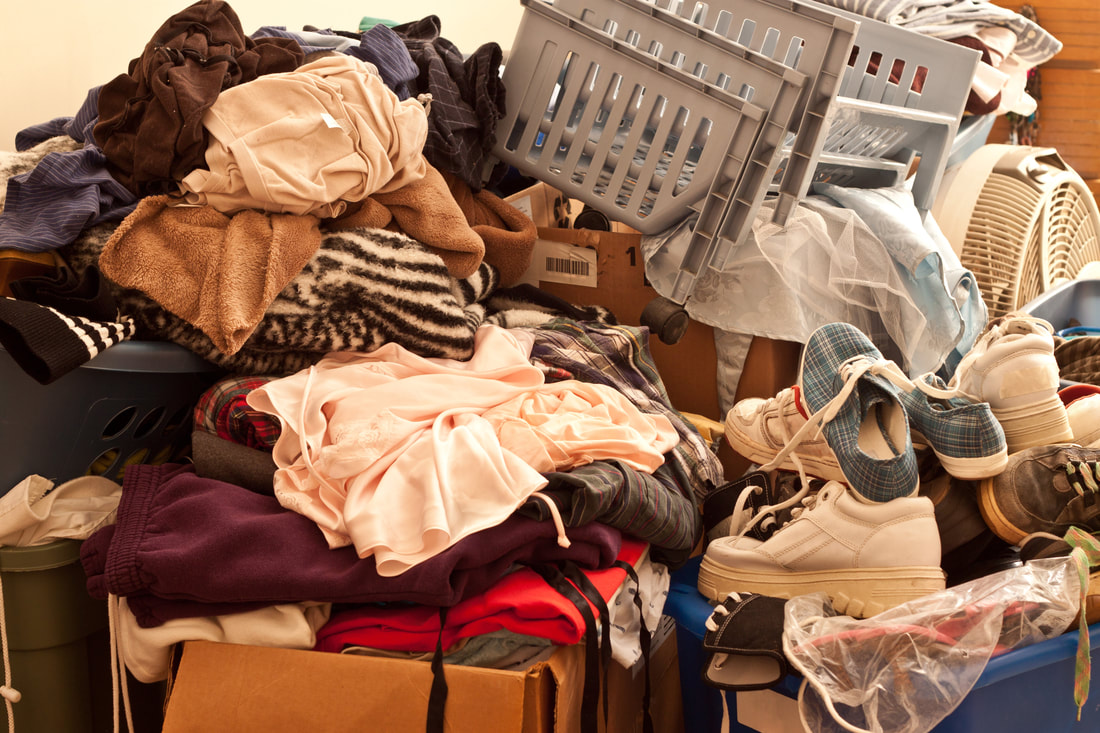
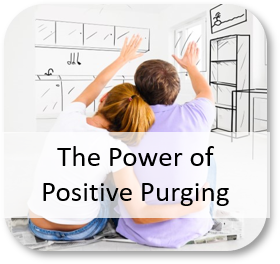

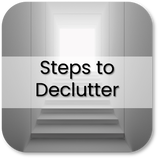
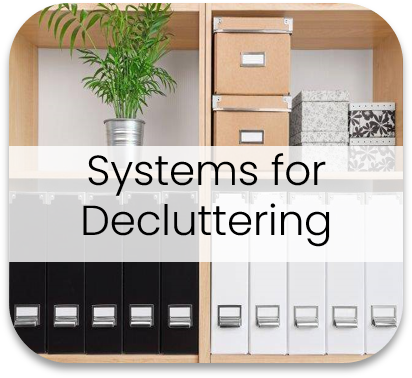
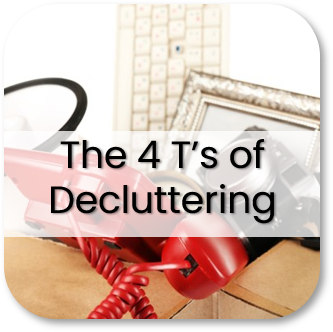
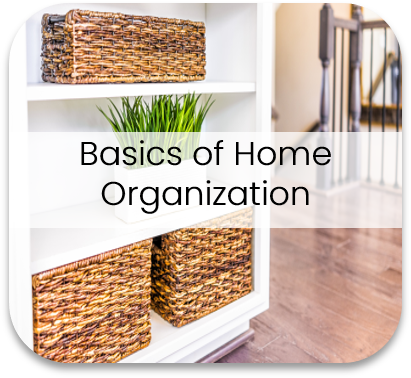
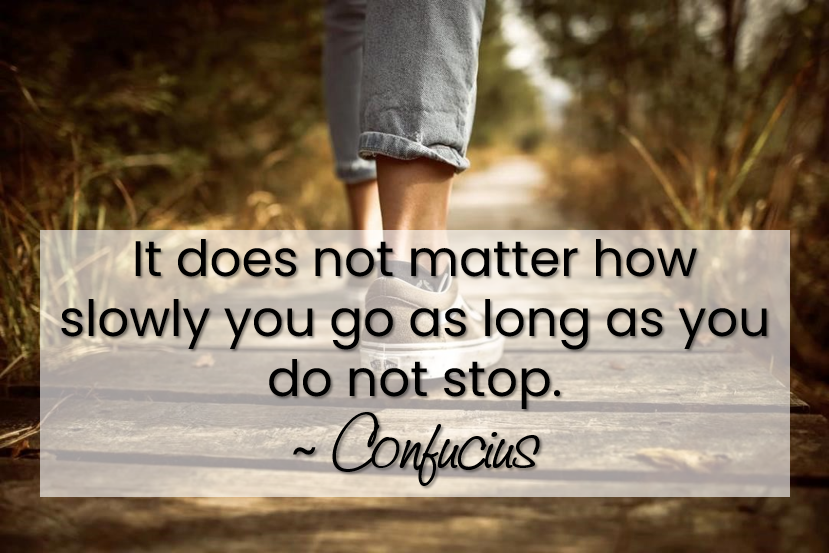



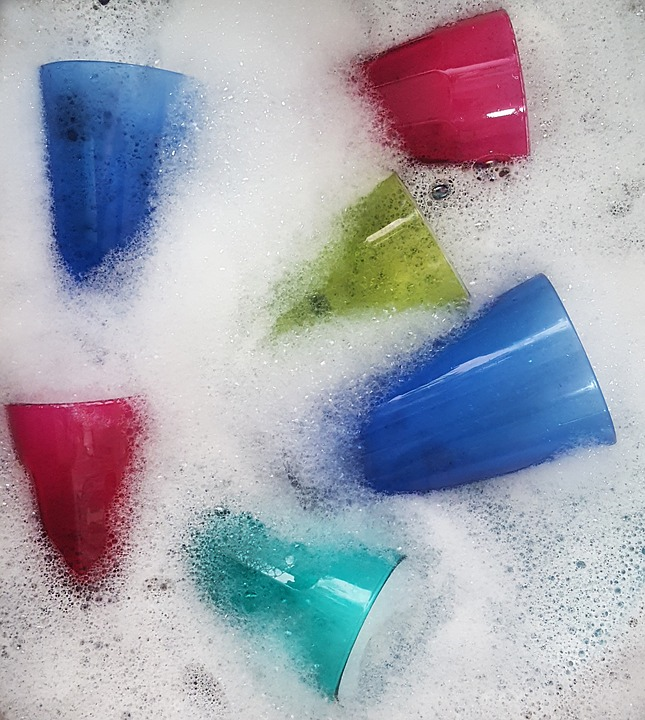




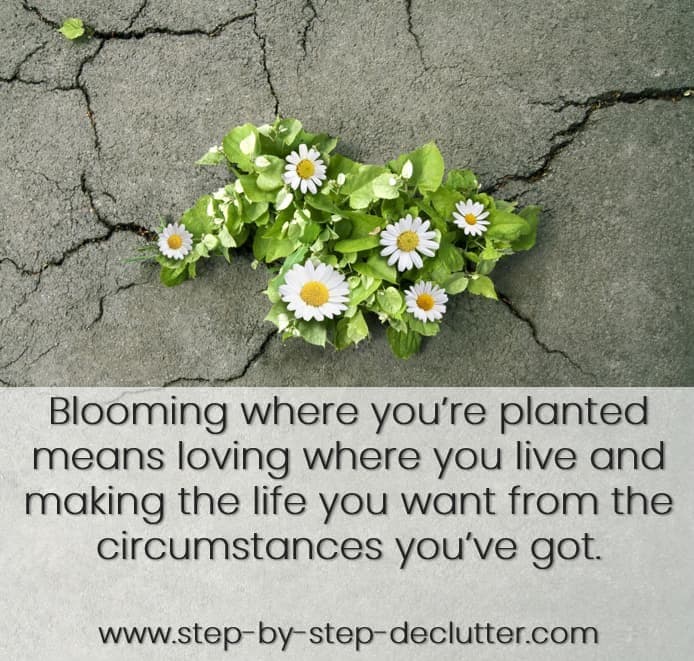


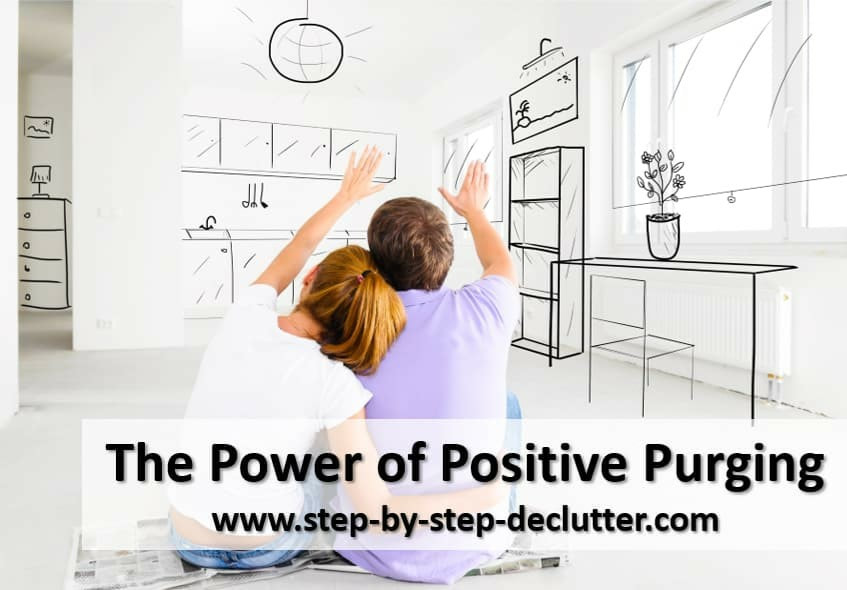

 RSS Feed
RSS Feed